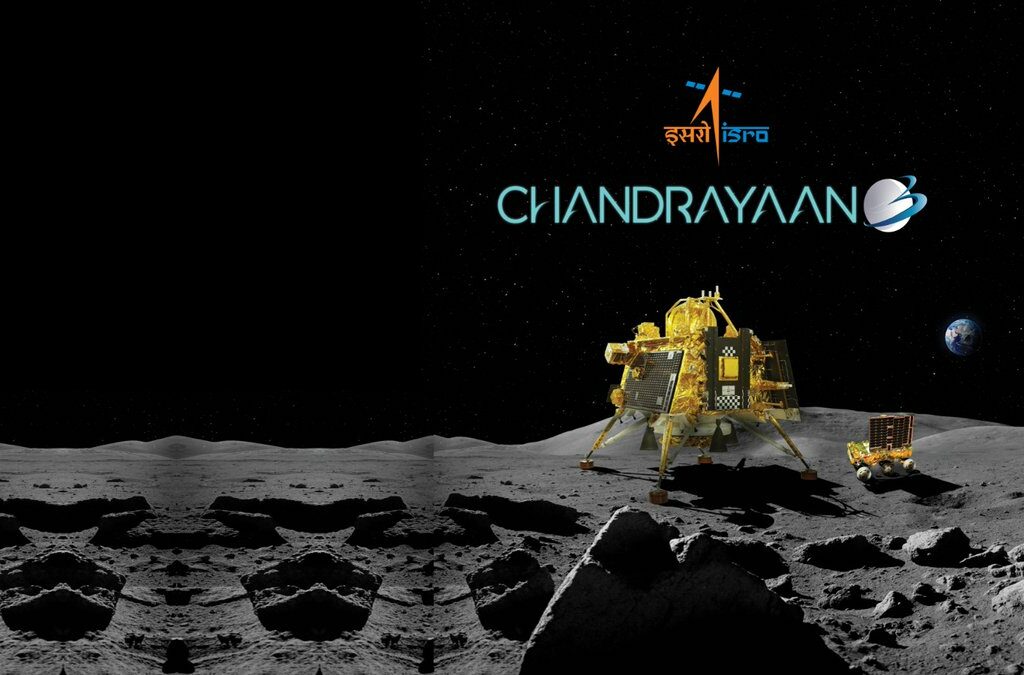
Introduction
In the realm of space exploration, India has carved a niche for itself with remarkable achievements. One such milestone is the Chandrayaan-3 mission, poised to make significant strides in lunar exploration. In this article, we delve into the core objectives, components, and potential outcomes of Chandrayaan-3. Let’s embark on this journey to unravel the secrets of the Moon’s South Pole and India’s ascent in space exploration.
Understanding Chandrayaan-3
Chandrayaan-3, the third iteration of India’s lunar exploration program, has three primary objectives:
- Soft Landing Demonstration: At the heart of Chandrayaan-3’s mission is the ambition to execute a flawless soft landing on the lunar surface, specifically targeting the enigmatic Moon’s South Pole. This feat, if achieved, will be a significant step forward in lunar exploration.
- Scientific Endeavours: Chandrayaan-3 is equipped with cutting-edge instruments to conduct in-situ scientific experiments, shedding light on the lunar surface and its unique environment. Among its tools are the Terrain Mapping Camera (TMC), Alpha Particle X-ray Spectrometer (APXS), Laser-Induced Breakdown Spectroscopy (LIBS) instrument, Magnetometer, and Heat Flow Probe.
- Technological Advancements: Beyond scientific exploration, Chandrayaan-3 aims to develop and demonstrate novel technologies necessary for future interplanetary missions. These innovations will be crucial for navigating the challenges of deep space.
The Chandrayaan-3 Spacecraft
The Chandrayaan-3 spacecraft comprises three pivotal modules:
1. The Orbiter: This module serves as the sentinel of the mission, orbiting the Moon for approximately a year. It carries out a diverse array of scientific experiments, gathering data that will expand our understanding of the Moon’s composition and environment.
2. The Lander: The Lander is the intrepid explorer, tasked with achieving the elusive soft landing on the Moon’s South Pole. Once safely on the lunar surface, it will deploy the Pragyan Rover, enabling precise surface exploration.
3. The Rover (Pragyan): Pragyan, the rover, is set to become the eyes and hands of Chandrayaan-3. With a mission duration of one lunar day (equivalent to 14 Earth days), it will traverse the lunar surface, investigating and analyzing the Moon’s geology and composition.
Impact on Lunar Exploration
Chandrayaan-3’s mission holds the promise of transforming our understanding of the Moon in several key ways:
1. Unveiling Lunar Geology: The lunar South Pole is believed to be rich in water ice. Chandrayaan-3’s successful landing and exploration will help us better comprehend the geology of this region, potentially uncovering vital resources for future lunar missions.
2. Studying the Lunar Environment: The spacecraft will meticulously examine the lunar environment, measuring radiation levels and scrutinizing the lunar dust particles. These insights are crucial for ensuring the safety and success of future lunar missions involving human explorers.
3. Technological Advancements: Chandrayaan-3’s mission is not just about scientific discovery; it’s a technological leap forward. Developing and demonstrating new technologies, particularly in soft landing systems, will pave the way for more ambitious interplanetary missions.
Key Takeaways
In summary, Chandrayaan-3 represents India’s dedication to space exploration. With its triple objectives of soft landing demonstration, scientific exploration, and technological innovation, it stands as a beacon of progress in lunar studies. Its potential to unravel the Moon’s secrets and contribute to future lunar missions is immense.
Conclusion
The Chandrayaan-3 mission embodies India’s determination to explore the Moon’s mysteries and strengthen its position in the global space community. As it embarks on its journey to the lunar South Pole, it carries not only scientific instruments but also the aspirations of a nation eager to expand its horizons. The success of Chandrayaan-3 will undoubtedly be a watershed moment for India’s space program and a giant leap toward conquering the cosmos.
